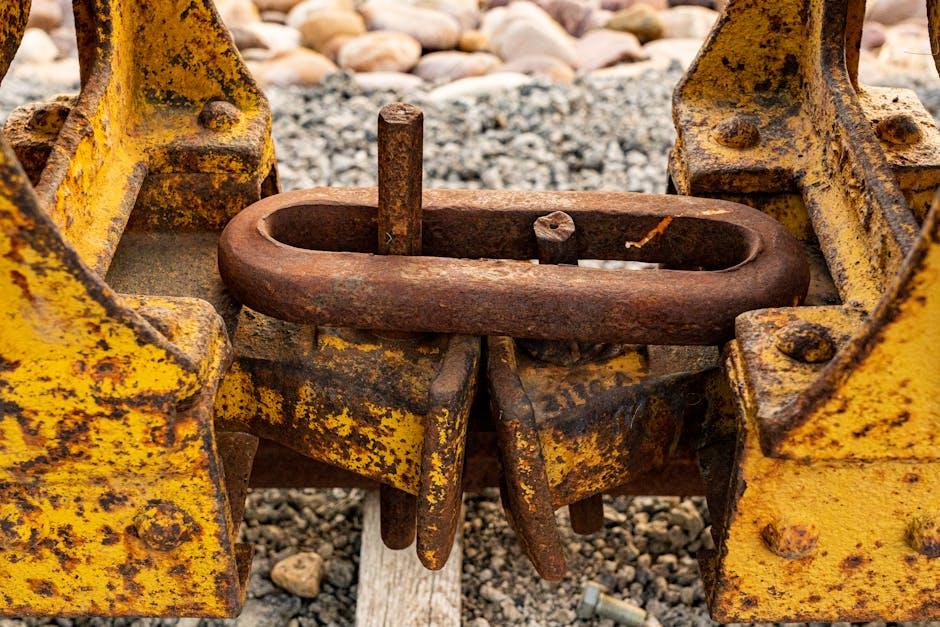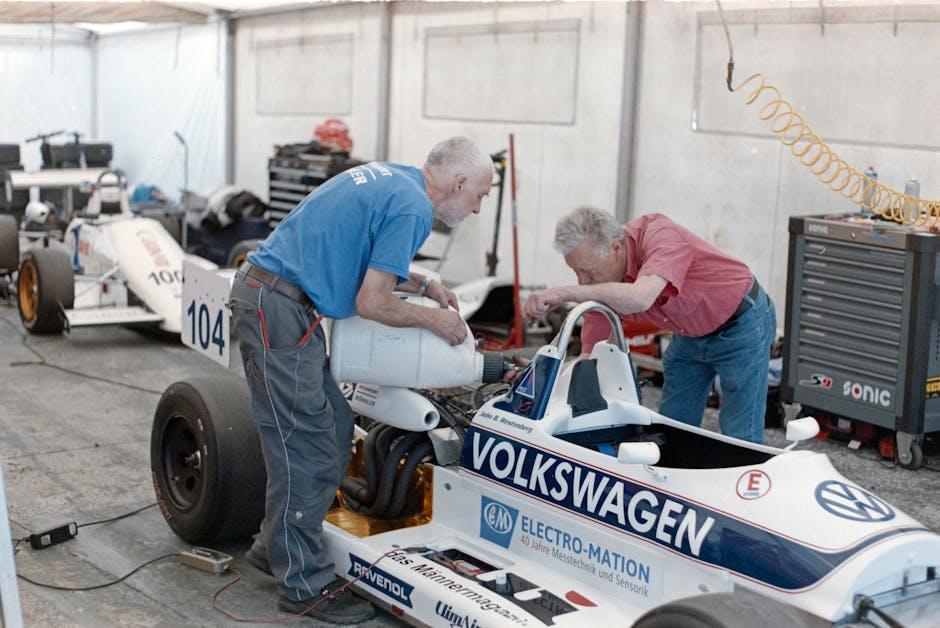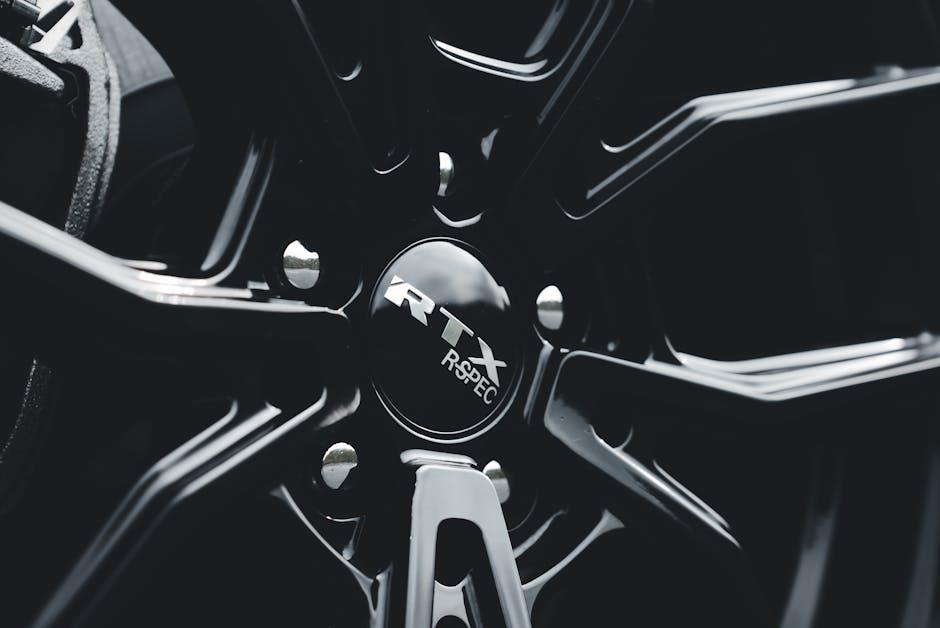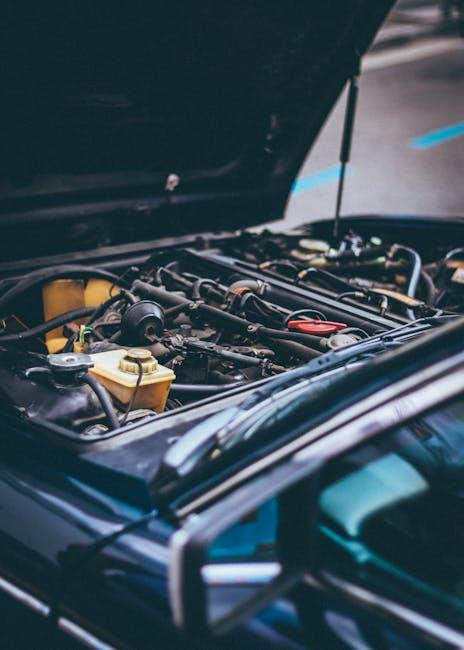Beneath the hood of every vehicle lies a complex symphony of metal and motion, tirelessly working to carry us from one destination to the next. The engine, often regarded as the heart of the machine, endures countless miles, weathering heat, pressure, and wear. But like any finely tuned instrument, it requires care and attention to perform at its best over time. Understanding how to increase engine lifespan is not only a way to save on costly repairs and replacements but also a key to unlocking the full potential and reliability of your vehicle. In this article, we’ll explore practical strategies and insightful tips that breathe longevity into your engine’s life, ensuring it runs smoothly mile after mile.
Table of Contents
- Understanding the Basics of Engine Wear and Tear
- Choosing Quality Lubricants for Optimal Performance
- Mastering Regular Maintenance and Inspection Routines
- The Role of Proper Driving Habits in Engine Longevity
- Cooling System Care for Preventing Overheating Damage
- Recognizing Early Signs of Engine Trouble and Acting Promptly
- Q&A
- The Conclusion

Understanding the Basics of Engine Wear and Tear
Engines are intricate machines that rely on precise interactions between countless moving parts. Over time, these components naturally degrade due to friction, heat, and the chemical effects of combustion. This degradation, often referred to as wear and tear, impacts engine efficiency and longevity. Key contributors include abrasion between metal surfaces, corrosion from combustion by-products, and the breakdown of lubricants under high temperatures. Recognizing how these factors play a role helps in adopting practices that minimize their effects and extend engine life.
Several subtle warning signs can indicate the early stages of engine wear:
- Decreased fuel efficiency: A sign of increased internal friction or poor combustion.
- Unusual engine noises: Rattles or knocking sounds often arise from worn bearings or loose components.
- Smoke from the exhaust: Can signal worn piston rings or valve seals allowing oil to enter the combustion chamber.
| Wear Factor | Main Cause | Preventive Measure |
|---|---|---|
| Friction | Inadequate lubrication | Regular oil changes and using high-quality lubricants |
| Corrosion | Water and acid buildup | Proper coolant maintenance and timely flushing |
| Heat Stress | Overheating due to poor cooling | Maintain cooling system, check coolant levels |

Choosing Quality Lubricants for Optimal Performance
Selecting the right lubricant is crucial to ensuring your engine operates smoothly and lasts longer. It’s not just about picking any oil off the shelf; you need lubricants that meet or exceed your vehicle’s specific requirements. Opt for products that carry industry certifications, which guarantee they adhere to rigorous performance and quality standards. Remember, high-quality lubricants help reduce friction, protect against corrosion, and improve fuel efficiency, all of which contribute to extending engine life.
When choosing a lubricant, consider the following key factors:
- Viscosity: Choose an oil with viscosity suitable for your engine’s design and climate conditions.
- Type: Synthetic oils generally outperform conventional oils in extreme temperatures and longer intervals.
- Additives: Look for lubricants with advanced additives that enhance engine cleanliness and wear protection.
| Lubricant Type | Recommended Usage | Key Benefit |
|---|---|---|
| Conventional | Regular driving, moderate conditions | Cost-effective |
| Synthetic | High-performance engines, extreme climates | Superior protection & longevity |
| Synthetic Blend | Mixed driving conditions | Balanced performance and price |

Mastering Regular Maintenance and Inspection Routines
Consistent care is the cornerstone of enhancing your engine’s durability. By integrating routine checks into your vehicle maintenance schedule, potential issues can be caught before they snowball into costly repairs. Visual inspections should focus on spotting leaks, unusual wear, or grime buildup that can hinder engine performance. Complement these with comprehensive assessments of key components like belts, hoses, and the cooling system to ensure they are functioning optimally. A proactive approach is your engine’s best defense against premature wear.
Establishing a checklist can streamline these maintenance habits, making them less overwhelming and more efficient. Here’s a simple guide to follow during each inspection:
- Check oil levels and quality to prevent friction damage.
- Inspect air filters for dirt accumulation.
- Examine spark plugs for signs of corrosion or abnormal wear.
- Assess coolant levels to avoid overheating.
- Look over battery terminals for corrosion that could cause starting issues.
| Inspection Item | Frequency | Key Benefit |
|---|---|---|
| Oil Level & Quality | Monthly | Reduces engine friction and wear |
| Air Filter | Every 10,000 miles | Improves fuel efficiency and performance |
| Spark Plugs | Every 30,000 miles | Ensures smooth ignition and combustion |
| Coolant Level | Quarterly | Prevents engine overheating |
| Battery Terminals | Biannually | Maintains reliable engine starts |

The Role of Proper Driving Habits in Engine Longevity
Adopting thoughtful driving techniques is a subtle yet powerful way to enhance your engine’s lifespan. Smooth acceleration, gradual braking, and avoiding unnecessary revving not only reduce wear but also maintain the internal components’ integrity over time. Harsh starts and sudden stops cause internal forces that accelerate engine fatigue, while consistently driving within the optimal RPM range helps keep your engine cool and efficient.
Incorporating these habits leads to long-term benefits such as improved fuel efficiency and fewer mechanical issues. Consider integrating these essential practices:
- Warm up the engine briefly before heavy use
- Avoid prolonged idling to prevent carbon build-up
- Shift gears smoothly and at the right RPM
- Maintain steady speeds on highways
| Driving Habit | Effect on Engine |
|---|---|
| Smooth Acceleration | Reduces stress on pistons and crankshaft |
| Gentle Braking | Prevents sudden engine strain |
| Avoiding High RPM | Ensures cooler engine operation |
| Consistent Speed | Optimizes fuel combustion efficiency |

Cooling System Care for Preventing Overheating Damage
Maintaining your vehicle’s cooling system is essential to safeguarding the engine from the costly effects of overheating. This system acts as the engine’s temperature regulator, circulating coolant through vital components to absorb excess heat and ensure optimal operating conditions. Neglecting regular maintenance, such as flushing old coolant or inspecting hoses and clamps for leaks, can lead to serious damage like warped cylinder heads or a blown gasket, drastically reducing engine life. By keeping the cooling system clean and well-functioning, you not only prevent immediate engine failures but also promote smoother performance and fuel efficiency.
Here are key practices to keep your cooling system in top shape:
- Monitor Coolant Levels: Check levels monthly and top off with the recommended type.
- Inspect Radiator and Hoses: Look for cracks, leaks, or wear and replace parts as needed.
- Flush the System: Perform a coolant flush every 2-3 years or per manufacturer guidelines.
- Test the Thermostat: Ensure it opens and closes correctly to regulate temperature.
| Cooling System Component | Maintenance Tip |
|---|---|
| Coolant | Use manufacturer-approved mixture |
| Radiator Cap | Replace if seal is cracked or worn |
| Thermostat | Replace every 50,000 miles or if faulty |
| Water Pump | Check for leaks or noise regularly |

Recognizing Early Signs of Engine Trouble and Acting Promptly
Detecting problems in your engine before they escalate is crucial for extending its lifespan. Pay close attention to unusual noises such as knocking or ticking, which often signal internal issues. Sudden drops in fuel efficiency, sluggish acceleration, or unexpected warning lights flashing on your dashboard are key indicators that something isn’t quite right. Rather than ignoring these early signs, taking swift action can prevent costly repairs and keep your engine running smoothly for years to come.
Keeping an eye on maintenance indicators and performing regular checks offers a proactive approach to engine health. Here are some signs that warrant immediate attention:
- Excessive exhaust smoke – a sign of burning oil or fuel mixture problems
- Rough idling or stalling – often linked to fuel or ignition issues
- Fluid leaks – coolant or oil drips under your vehicle
- High engine temperature – overheating can cause severe damage
| Symptom | Possible Cause | Recommended Action |
|---|---|---|
| Knocking noise | Worn bearings or piston issues | Schedule diagnostic check immediately |
| Warning light on dashboard | Sensor or engine malfunction | Use OBD-II scanner or visit mechanic |
| Blue exhaust smoke | Burning oil | Inspect valve seals and piston rings |
Q&A
Q&A: How to Increase Engine Lifespan
Q1: Why should I care about increasing my engine’s lifespan?
A1: Your engine is the heart of your vehicle. Extending its lifespan means fewer breakdowns, better performance, and ultimately, saving money on costly repairs or replacements. Think of it as nurturing a long-term relationship rather than a short fling.
Q2: What’s the single most important habit to boost engine longevity?
A2: Regular oil changes are your engine’s best friend. Fresh oil lubricates moving parts, reduces friction, and prevents wear and tear. Skipping oil changes is like running a marathon without water—eventually, things will overheat and break down.
Q3: How often should I change my engine oil?
A3: Follow your manufacturer’s recommendation, typically every 5,000 to 7,500 miles. However, harsh driving conditions like stop-and-go traffic or dusty roads may require more frequent changes. When in doubt, check that dipstick!
Q4: Can proper driving habits really make a difference?
A4: Absolutely. Avoiding aggressive acceleration and excessive idling reduces engine stress. Think of your engine as a marathon runner: slow and steady wins the longevity race. Warm up your engine gently, especially on cold mornings.
Q5: What role does cooling play in engine health?
A5: Vital. Overheating is a top engine killer. Keep coolant levels in check, inspect hoses for leaks, and replace the radiator cap if it’s not sealing properly. Your cooling system is the engine’s personal air conditioner—treat it well.
Q6: Should I worry about air filters?
A6: Yes! A clean air filter ensures your engine breathes freely. Clogged filters reduce performance and increase fuel consumption. Replacing or cleaning your air filter periodically is like giving your engine a breath of fresh air.
Q7: How important is using the right fuel?
A7: Using the recommended fuel grade ensures optimal combustion and prevents engine knocking. Cheap, low-quality fuel might save you a few bucks now but can cause deposits and damage in the long run. Think of fuel as gourmet food for your engine.
Q8: Can routine inspections help catch problems early?
A8: Definitely. Regularly checking belts, hoses, spark plugs, and fluid levels can prevent minor issues from snowballing. It’s like a health check-up for your engine—early detection leads to easier fixes.
Q9: Is it worth investing in professional engine tune-ups?
A9: Yes, periodic tune-ups optimize engine efficiency and can identify hidden problems. A well-tuned engine runs smoother, cleaner, and lasts longer, making tune-ups a smart investment.
Q10: Any unconventional tips to squeeze extra years out of my engine?
A10: Consider using fuel additives that clean engine parts or synthetic oils that offer superior protection. Also, avoid short trips where the engine doesn’t reach optimal temperature, as incomplete combustion can cause buildup. Treat your engine like a treasured vintage car—it deserves thoughtful care.
By following these guidelines, you’re not just maintaining an engine—you’re extending its story, keeping your journey smooth, and honoring the craftsmanship under your hood.
The Conclusion
In the end, increasing your engine’s lifespan is less about quick fixes and more about cultivating a mindful relationship with your vehicle. By embracing consistent maintenance, quality components, and thoughtful driving habits, you’re not just extending the engine’s life—you’re investing in the reliability and performance that keep your journeys smooth and worry-free. Remember, every mile traveled is a testament to the care you’ve put under the hood, turning your engine from a ticking clock into a lasting companion on the road ahead.

